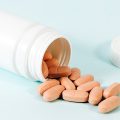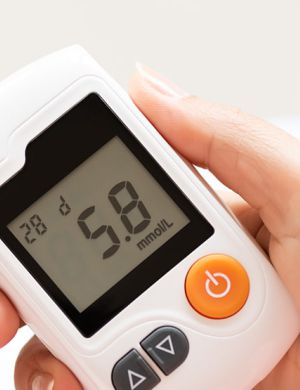
Medical Devices–USA/Europe Regulatory Updates Roundup, Oct 2022
EUROPE
MDCG 2022-16 – Guidance on Authorised Representatives Regulation (EU) 2017/745 and Regulation (EU) 2017/746
The document has been endorsed by the Medical Device Coordination Group (MDCG) established by Article 103 of Regulation (EU) 2017/745. The MDCG is composed of representatives of all Member States and it is chaired by a representative of the European Commission.
This guidance document is to provide guidance on relevant requirements under the Regulations for authorised representatives, manufacturers and other economic operators. If clarification is already covered by other MDCG guidance’s, this guidance on authorised representatives includes a reference.
MDCG 2019-6 Rev.4 – Questions and answers: Requirements relating to notified bodies
The document has been endorsed by the Medical Device Coordination Group (MDCG) established by Article 103 of Regulation (EU) 2017/745. The MDCG is composed of representatives of all Member States and it is chaired by a representative of the European Commission.
This document presents questions and answers on requirements relating to notified bodies under Regulation (EU) 2017/745 on medical devices (MDR) and Regulation (EU) 2017/746 on in vitro diagnostic medical devices (IVDR). The issues covered by this document were identified in the context of joint assessments, and the document may be updated from time to time as new issues are identified.
Notified bodies survey on certifications and applications
This is about the survey on certifications and applications received in October 2022. Out of 51 notified bodies, 47 replies were received. Data from previous survey (April 2022) have been considered. MDR applications and certificates may be slightly underestimated (1 out of the 3 missing NB recently MDR designated).
Expert decision and opinion in the context of the Clinical Evaluation Consultation Procedure (CECP)
This scientific opinion reflects the views of independent experts (MDR Article 106) on the clinical evaluation assessment report (CEAR) of the notified body. The advice is provided in the context of the clinical evaluation consultation procedure (CECP), which is an additional element of conformity assessment by notified bodies for specific high-risk devices (MDR Article 54 and Annex IX, Section 5.1).
Team-NB adopts position paper on cyber security, use of off-label data for medical devices
The European Association for Medical devices of Notified Bodies (Team-NB) has adopted position papers on cyber security and data generated from off-label use. The increasing number of connected medical devices and ongoing digitisation in healthcare brings new market opportunities for the manufacturer and, more importantly, improvements in patient care. At the same time, it presents new and different types of risks to the safety, security, and privacy of medical devices. These connected medical devices range from sensor-based technologies such as wearable’s to software as medical device such as mobile medical apps and also to implantable medical devices such as pacemakers. To ensure the safe and secure use of medical devices, state of the art regulatory frameworks are necessary.
Swissmedic inspects Swiss authorised representatives (CH-REP), 03.10.2022)
Swissmedic carried out systematic, focused inspections of Swiss authorised representatives (CH-REP) in the first half of 2022 to check their implementation of the provisions in the market.
MedTech Europe signs joint industry statement calling on EU legislators to respect NLF principles in the Artificial Intelligence Act
The proposed Artificial Intelligence Act (AI Act) builds on the legal architecture of the New Legislative Framework (NLF) that serves to improve the safety and quality of products accessing the European market.
UK (MHRA)
Medical devices: guidance for manufacturers on vigilance
This guidance is for manufacturers of medical devices about reporting adverse incidents and field safety corrective actions to the MHRA. Adverse incidents involving medical devices that occur in the UK must be reported to the Medicines and Healthcare products Regulatory Agency (MHRA). The MHRA is responsible for the UK medical device market.
Once a medical device has been placed on the UK market, the manufacturer must submit vigilance reports to the MHRA when certain types of incidents that involve their device occur in the UK. The manufacturer must also take appropriate safety action when required. The manufacturer will need to ensure their device meets appropriate standards of safety and performance for as long as it is in use.
Implementation of the future regulation of medical devices and extension of standstill period
They are introducing a 12-month extension to the implementation of the future Medical Device Regulations, with an aim to bring the new regulations into force by July 2024.
The transitional arrangements set out in the government response outline an extension to the recognition of CE marked medical devices placed on the Great Britain market, which is intended to be reflected within the UK MDR 2002, once it is amended.
The government intends to introduce legislation by Spring 2023 that will bring into force the transitional arrangements and post-market surveillance requirements as outlined in the government response. Bringing into force the new post-market surveillance requirements ahead of the wider future regulatory regime reflects the government’s priority of improving patient safety as part of the future Medical Device Regulations.
Software and AI as a Medical Device Change Programme
The Medicines and Healthcare products Regulatory Agency (MHRA) have embarked upon an ambitious programme of reform to ensure that medical device regulation is fit for purpose for software, including artificial intelligence (AI).
This Programme builds upon wider reforms for medical devices as a whole detailed in the Government response to consultation on the future regulation of medical devices in the United Kingdom. This programme includes further information on each work package of the Change Programme, including deliverables to meet each set of broad objectives, and further information on how the broad Change Programme will be implemented.
The Change Programme will deliver bold steps to provide a regulatory framework that provides a high degree of protection for patients and public, but also makes sure that the UK is recognised globally as a home of responsible innovation for medical device software looking towards a global market.
Ireland (HPRA)
Public consultation on proposed fees for 2023: Human Medicines, Compliance Activities, Blood, Tissue Establishments, Organs and Medical Devices
The HPRA wishes to seek comments on the annual review and proposal for fees 2023: Human Medicines, Compliance Activities, Blood, Tissue Establishments, Organs and Medical Devices. This guidance document aims to help officials in deciding when, who and how to consult. This guidance recognises that consultation forms part of wider engagement, and decisions on whether and how to consult should in part depend on the wide scheme of engagement, which may be determined, either generally or in relation to specific policy areas, by agreements etc. entered into as a result of membership of international and other bodies, that are imposed by Statute, or are otherwise required by Government.
USA (FDA)
Developing and Responding to Deficiencies in Accordance with the Least Burdensome Provisions
This guidance document is intended to help FDA staff develop a request for additional information needed to make a decision on a medical device marketing application in accordance with the Least Burdensome Provisions of the Food, Drug, and Cosmetic Act (FD&C Act).
In addition, this guidance describes suggested formats for FDA staff to communicate deficiencies, and for industry to use for responses to such requests, in order to make efficient use of industry and FDA’s time.
Medical Devices; Voluntary Total Product Life Cycle Advisory Program Pilot
The Food and Drug Administration’s Center for Devices and Radiological Health is announcing its voluntary Total Product Life Cycle Advisory Program Pilot that will begin in fiscal year (FY) 2023.
The TAP Pilot is one of the commitments agreed to between FDA and industry as part of the reauthorization of the Medical Device User Fee Amendments for FY 2023 through FY 2027 (MDUFA V)
The voluntary TAP Pilot is intended to demonstrate the feasibility and benefits of process improvements to FDA’s early interactions with participants and of FDA’s facilitation of interactions between participants and stakeholders that support the vision for TAP.
Postmarket Surveillance Under Section 522 of the Federal Food, Drug, and Cosmetic Act
The purpose of this guidance document is to assist manufacturers of devices subject to section 522 postmarket surveillance orders (522 orders) by providing information on how to fulfill section 522 obligations.
Notice of Meeting; General and Plastic Surgery Devices Panel of the Medical Devices Advisory Committee
The Food and Drug Administration (FDA) announces a forthcoming public advisory committee meeting of the General and Plastic Surgery Devices Panel of the Medical Devices Advisory Committee. The general function of the committee is to provide advice and recommendations to FDA on regulatory issues.
User Fees and Refunds for Premarket Approval Applications and Device Biologics License Applications
The purpose of this guidance document is to identify: (1) the types of PMAs and BLAs subject to device user fees; (2) exceptions to user fees; and (3) the actions that may result in refunds of user fees that have been paid.
User Fees and Refunds for Premarket Notification Submissions (510(k)s)
The purpose of this guidance document is to identify: (1) the types of 510(k)s subject to user fees, (2) exceptions to user fees, and (3) the actions that may result in refunds of user fees that have been paid. This document incorporates the impact of process improvements from MDUFA V.
FDA and Industry Actions on De Novo Classification Requests: Effect on FDA Review Clock and Goals
The Medical Device User Fee Amendments of 2022 (MDUFA V) amended the Federal Food, Drug, and Cosmetic Act (the FD&C Act) to authorize FDA to collect user fees for the review of certain premarket submissions received on or after October 1, 2022, including De Novo classification requests (De Novo requests). The additional funds obtained from user fees will enable FDA, with the cooperation of industry, to improve the device review process to meet certain performance goals and implement improvements for the medical device review process.
FDA and Industry Actions on Premarket Notification (510(k)) Submissions: Effect on FDA Review Clock and Goals
The Medical Device User Fee Amendments of 2022 (MDUFA V) amended the Federal Food, Drug, and Cosmetic Act (the FD&C Act) to authorize FDA to collect user fees for the review of certain premarket submissions received on or after October 1, 2022, including premarket notification submissions (510(k)s). The additional funds obtained from user fees will enable FDA, with the cooperation of industry, to improve the device review process to meet certain performance goals and implement improvements for the medical device review process.
FDA and Industry Actions on Premarket Approval Applications (PMAs): Effect on FDA Review Clock and Goals
The Medical Device User Fee Amendments of 2022 (MDUFA V) amended the Federal Food, Drug, and Cosmetic Act (the FD&C Act) to authorize FDA to collect user fees for the review of certain premarket submissions received on or after October 1, 2022, including premarket approval applications (PMAs). The additional funds obtained from user fees will enable FDA, with the cooperation of industry, to improve the device review process to meet certain performance goals and implement improvements for the medical device review process.
BRASIL (ANVISA)
Software as a medical device: questions and answers
The document with questions and answers regarding the content of the Resolution of the Collegiate Board of Directors (RDC) 657/2022 is now available for consultation, which provides for the regularization of software as a medical device (Software as a Medical Device – SaMD).
These guidelines can help the bodies of the National Health Surveillance System (SNVS), health services, software manufacturers subject to the health surveillance regime and medical device distributors in the correct implementation and inspection of the regulation in question.
This document should be used to resolve doubts and align interpretations about the Resolution – RDC No. 657, of March 24, 2022, both by the regulated sector, comprising health services, manufacturing companies and software distribution companies such as medical device, as well as by inspectors from the National Health Surveillance System (SNVS) that carry out the verification of the Good Practices for the Operation of Health Services and inspection of medical devices subject to the sanitary surveillance regime.
Don’t miss out! Click here to stay in touch.
Categories
- Biopharma (47)
- Consumer Health (15)
- Cosmetics (8)
- Diagnostics (5)
- Digital Health (8)
- Food (2)
- Medical Device (100)
- OTC (4)
- Regulatory Intelligence (5)
- Standards (41)
Recent Blogs
Get the latest updates from Vistaar

Related Posts
CONNECT WITH US

Let's talk about how DDi can help you







